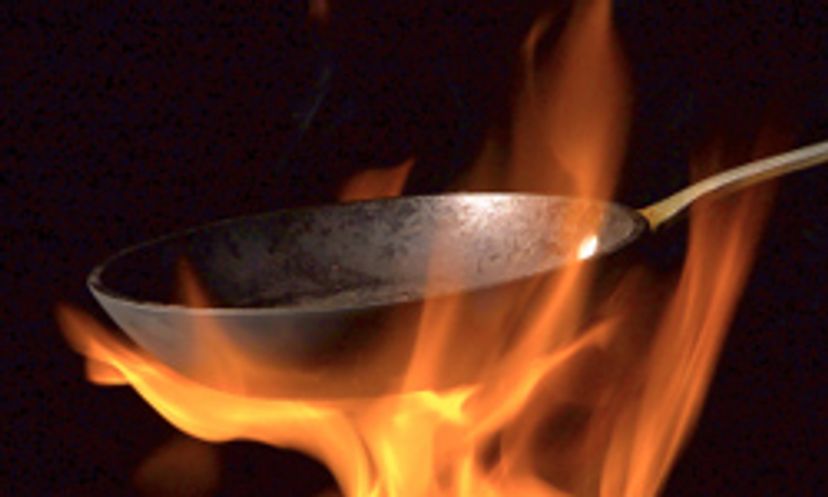
About This Quiz
There are many old wives' tales and urban legends associated with food and kitchen safety. But this, obviously, is an area where you don't want to mess around with myths and half-truths. You might think you know it all, but you should take our quiz.According to the Food and Drug Administration (FDA), even if a burger is brown in the middle, it might not be hot enough to safely eat. You should use a food thermometer to make sure it's 160 degrees Fahrenheit (71 degrees Celsius).
You have two hours to get everything into the fridge. But if it's more than 90 degrees Fahrenheit (32 degrees Celsius) out there, you have only one hour. So hop to it!
Bacteria multiply most rapidly between 40 degrees Fahrenheit (4 degrees Celsius) and 140 degrees Fahrenheit (60 degrees Celsius), so your fridge should always be below 40 degrees Fahrenheit (4 degrees Celsius).
Advertisement
An electric coil can reach 1,000 degrees Fahrenheit (538 degrees Celsius). That means it could burn your clothes even after it's turned off.
Never put water on a grease fire. If the fire is on the stove, smother it with a lid if you can. If it's in the oven, shut the door to cut off the air supply. Of course, you can use a fire extinguisher -- as long as it doesn't spray water.
The FDA says you should always defrost in the refrigerator to keep those nasty bacteria at bay.
Advertisement
Microwaving could create uneven heat, so even if a microwaved bottle feels warm to the touch, there could be hot spots.
We now know that many old home remedies for burns, like butter, don't really work all that well. But studies have shown that you can use honey on minor burns.
The FDA strictly regulates the types of plastic that can be used with food, so there's no chance that anything cancer-causing could seep into your food in the microwave.
Advertisement
It depends on the texture of the food -- scraping is probably OK with hard cheeses and firmer fruits and vegetables. But if the mold is on sauce or bread, for example, you never know how far the bacteria has spread. The FDA says, "When in doubt, throw it out!"
Chicken can remain fresh in your freezer for up to two months in its original packaging.
Wooden cutting boards naturally have tiny grooves that can harbor bacteria as opposed to plastic cutting boards. The harbored bacteria can cause foodborne illnesses.
Advertisement
It is not recommended to store eggs in the freezer because after thawing the raw eggs become gummy and cooked eggs become rubbery.
Mineral oil works best to seal the wood because it has no odor and is not prone to bacteria.
There are many food poisoning symptoms but if you're having difficulty talking, breathing or swallowing, it may be something more serious.
Advertisement
When dealing with a sharp knife, remember to cut away from the body on a clean and even surface. Also, remember to keep the grip clean to avoid slippery accidents.
A tightly packed freezer will stay frozen for 48 hours if the door is closed.
The recommended storage time for fruits in a 0 degrees Fahrenheit (-18 degrees Celsius) freezer is 12 months.
Advertisement
Bacteria breeds if food remains in the temperature range of 40 degrees to 140 degrees Farenheit (4 degrees to 60 degrees Celsius) for three or more hours.
Washing poultry before cooking isn't necessary because proper cooking will destroy bacteria. Also, rinsing the poultry can potentially cross-contaminate other surfaces or foods.